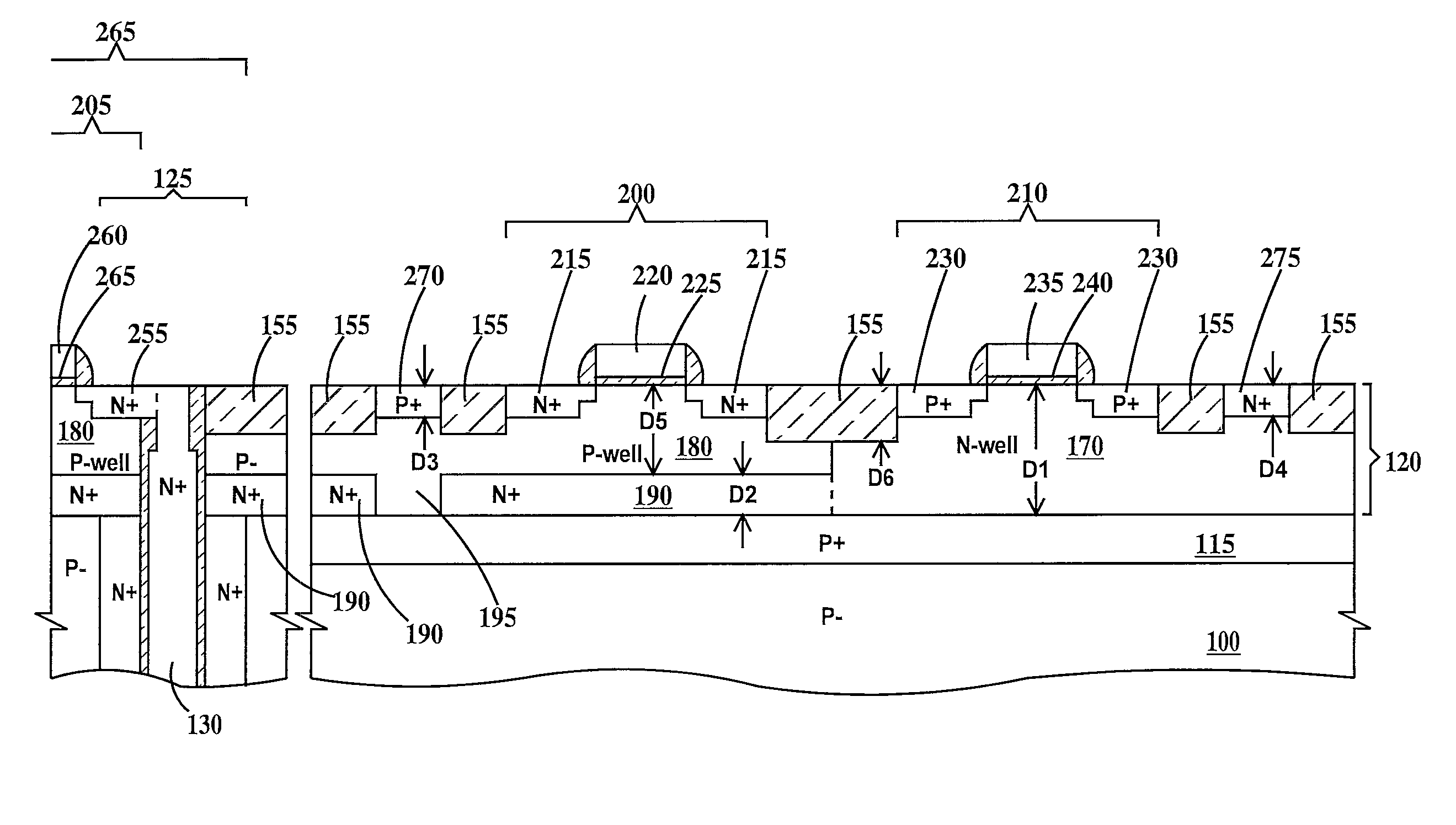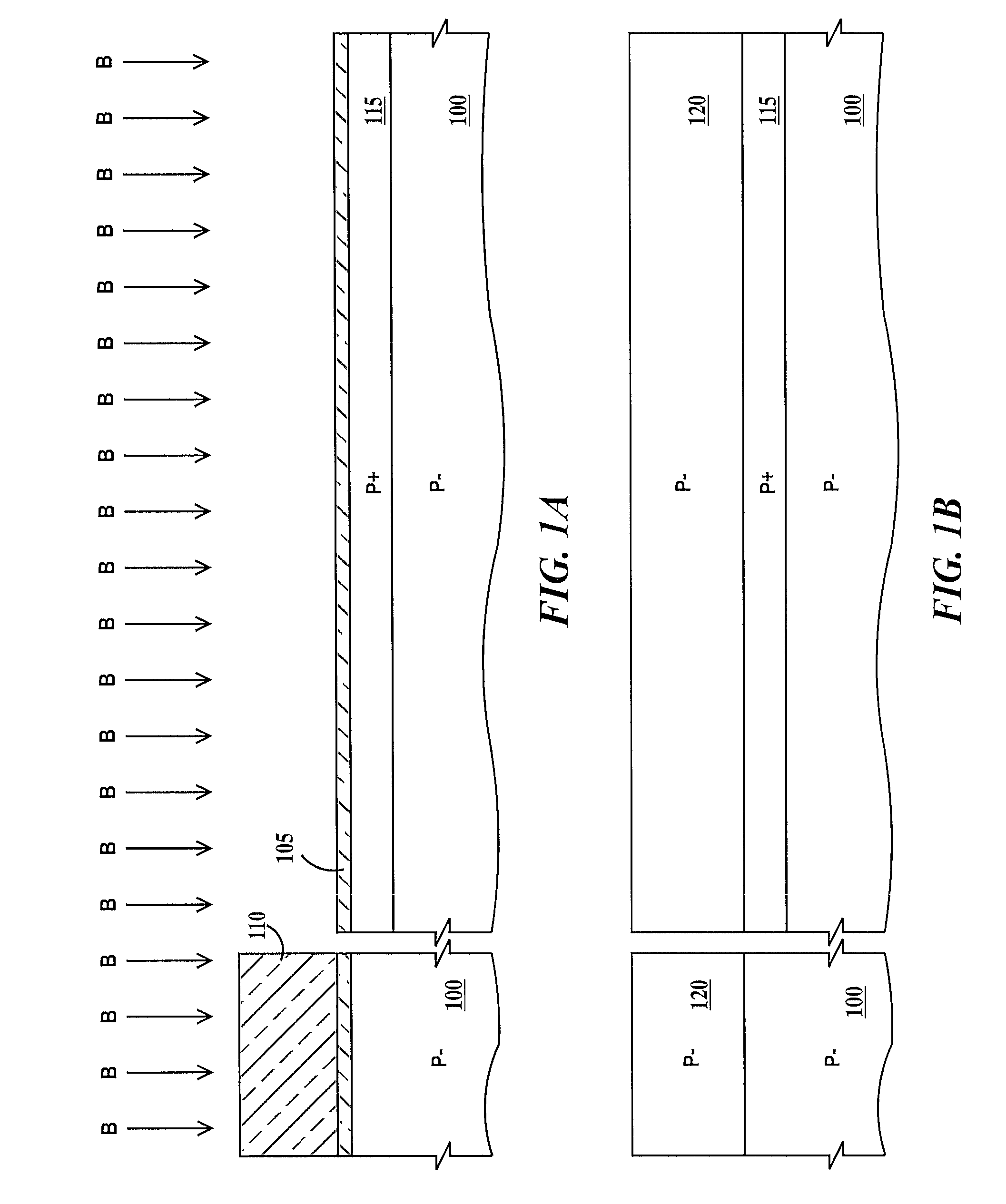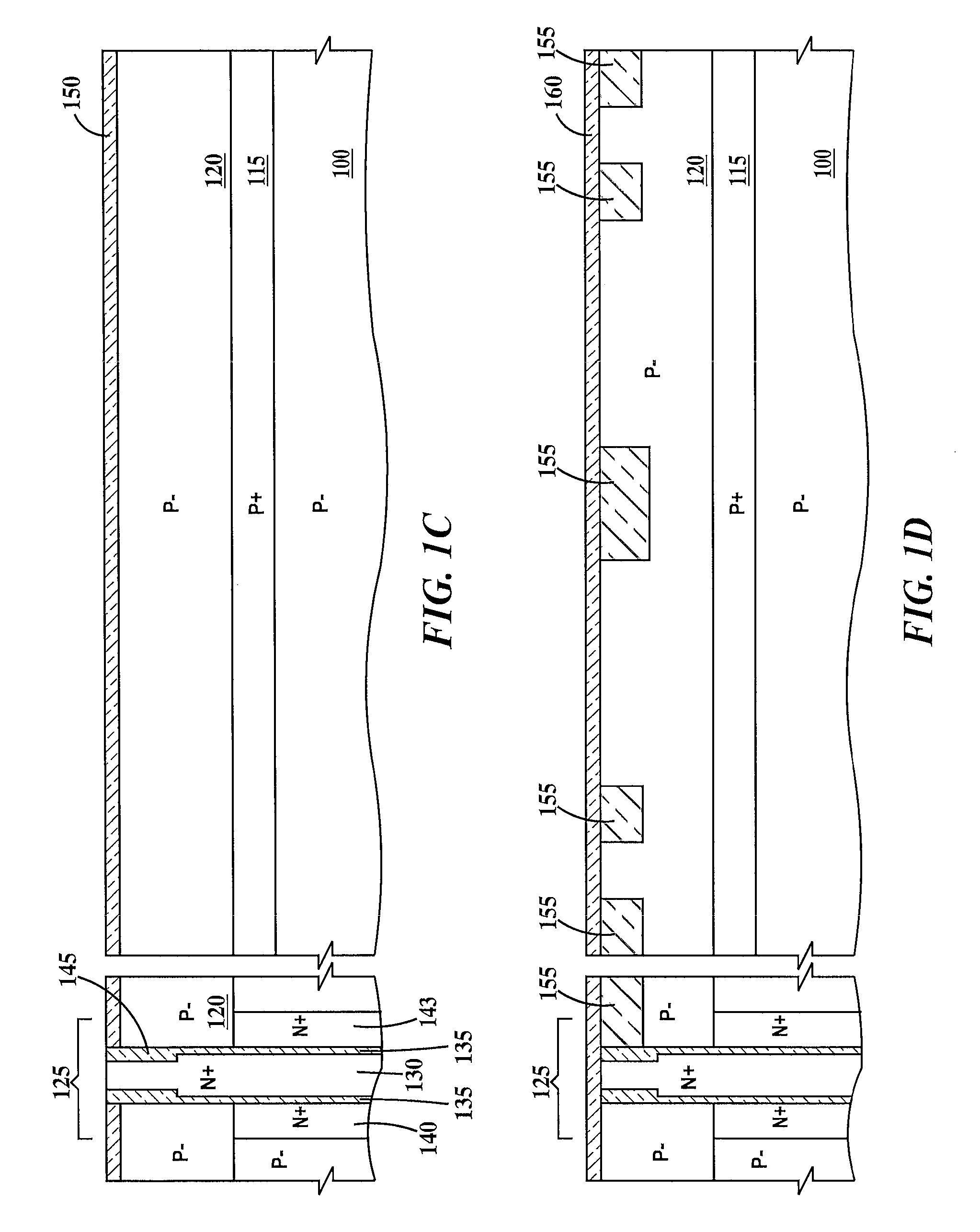Triple-well CMOS devices with increased latch-up immunity and methods of fabricating same
a technology of triple-well cmos and latch-up immunity, which is applied in the direction of semiconductor devices, electrical equipment, transistors, etc., can solve the problems of catastrophic failure of devices in which it occurs and even regions of integrated circuit chips, and achieve the effect of reducing latch-up
- Summary
- Abstract
- Description
- Claims
- Application Information
AI Technical Summary
Benefits of technology
Problems solved by technology
Method used
Image
Examples
Embodiment Construction
[0010]FIGS. 1A through 1I are cross-sectional views illustrating fabrication of CMOS devices according to embodiments of the present invention. In FIG. 1A, formed on a lightly doped P-type mono-crystalline silicon substrate 100 is a dielectric layer 105. In one example, substrate 100 is doped to a concentration between about 1E16 atm / cm3 and about 5E16 atm / cm3. In one example dielectric layer 105 is thermally grown silicon dioxide about 1 nm to about 10 nm thick. Formed on dielectric layer 105 is a patterned photoresist layer 110. In one example, patterned photoresist layer 110 may be formed by applying a layer of photoresist on dielectric layer 105, exposing the photoresist layer to actinic radiation through a patterned photomask, and developing the exposed photoresist layer to remove some regions of the exposed photoresist layer while leaving other regions of the exposed photoresist layer. Then a P-type ion-implantation is performed into substrate 100 to form highly P-doped region...
PUM
 Login to View More
Login to View More Abstract
Description
Claims
Application Information
 Login to View More
Login to View More - R&D
- Intellectual Property
- Life Sciences
- Materials
- Tech Scout
- Unparalleled Data Quality
- Higher Quality Content
- 60% Fewer Hallucinations
Browse by: Latest US Patents, China's latest patents, Technical Efficacy Thesaurus, Application Domain, Technology Topic, Popular Technical Reports.
© 2025 PatSnap. All rights reserved.Legal|Privacy policy|Modern Slavery Act Transparency Statement|Sitemap|About US| Contact US: help@patsnap.com



